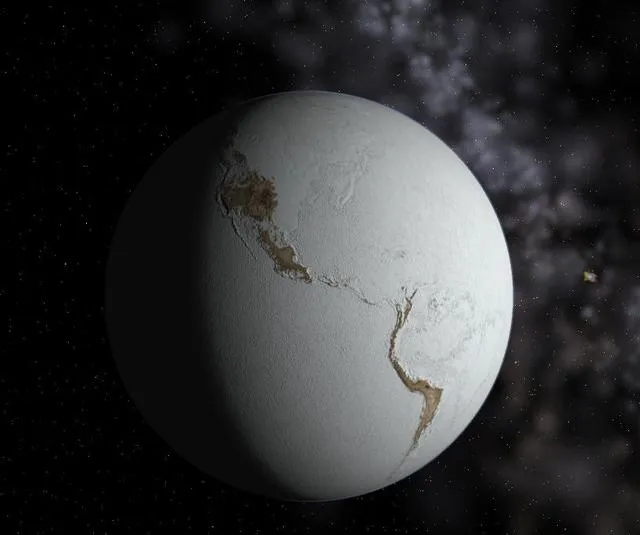At Next Nature, we often argue that "our image of nature as static, balanced and harmonious is naive and up for reconsideration." Paleontologist Peter J. Ward happens to agree. In a challenge to the Gaia hypothesis, which holds that all life functions as nurturing, super-organismal "mother", Ward argues that life on earth has a death wish that would do Freud proud.
Ward claims that, contrary to popular images of cataclysmic asteroids and volcanoes, most mass extinctions on earth were set in motion by microbes. 2.4 billion years ago, microscopic cyanobacteria emerged newly equipped with photosynthesis and triggered the Great Oxygenation Event. While great for aerobic organisms, it was fatal news for anaerobic life, which had up until then had free reign over the planet. The sudden release of oxygen is also likely what set off the Huronian Glaciation, a deadly "snowball earth" that kept the planet locked in ice for 300 million years.
Anaerobic microbes had their revenge during subsequent extinction events. Historically, whenever atmospheric carbon has risen above 1,000 parts per million (ppm), a super-charged greenhouse effect dramatically weakens the temperature differential between the poles and the tropics. Without pronounced temperature gradients to drive ocean mixing, only the top layer of the sea remains oxygenated. Anaerobic bacteria thrive below this zone, producing enough hydrogen sulfide gas to poison the entire planet. This poisoning may be to blame for the End-Permian event, "the mother of all extinctions", when 96% of all marine organisms disappeared.
Humans, microbes though we're not, are an element of the earth's self-destructive tendency. If our Co2 emissions go above the tipping point of 1,000 ppm, as predicted by some upper-end IPCC estimates for 2100, we may trip an event identical to the one that wiped out the trilobites.
Interestingly enough, in the long run, it's a carbon shortage that may spell the end of life, long before the sun vaporizes the oceans. In 500 million years, life's insatiable need for carbon – the basic building block of every organism – could mean that atmospheric carbon might eventually drop below 10 ppm, the amount needed to sustain grasses. In terms of total biomass, evidence indicates that earth is already in its "old age".
Life sprung from a happy coincidence of molecules. According to Ward, it will bumble around earth for about 4 billion years, and snuff itself out just as accidentally as it arose. So much for Disney nature.


Comments (0)
Share your thoughts and join the technology debate!
No comments yet
Be the first to share your thoughts!